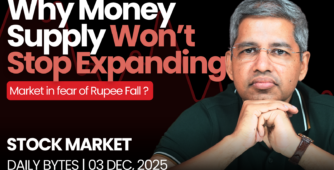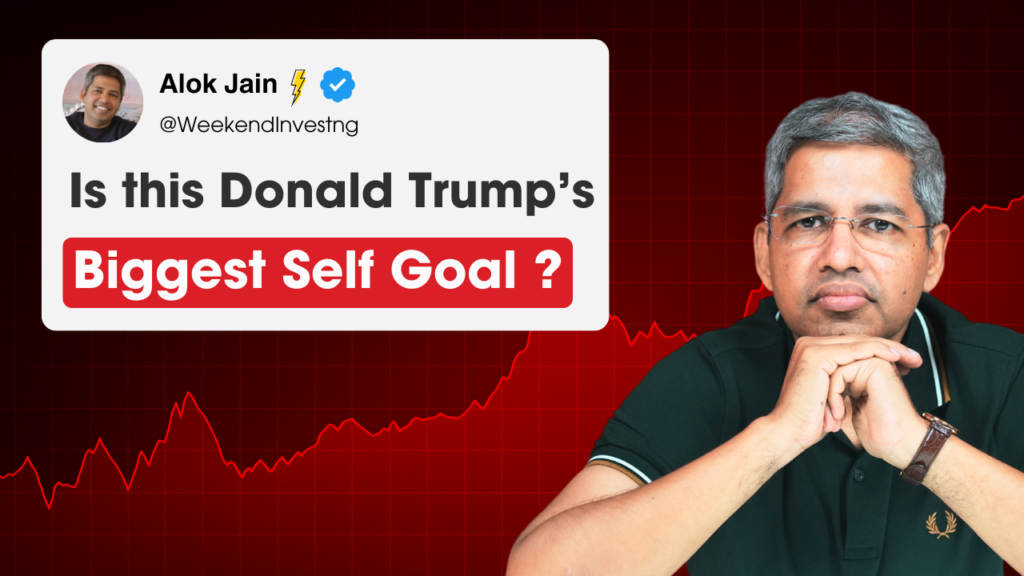
Hello, folks, and welcome to the Weekend Investing Daily Bite for Friday, April 4th. As I record this near 4 PM, the market woes are only intensifying. While I’m glad the week is coming to an end, the concerns over tariffs and economic fallout seem to be nowhere near a conclusion. As of today, China has imposed tariffs on U.S. imports into China, nearing a 34% rate, and this is quickly turning into a full-blown tariff war. In today’s world, this has become the modern way of “attacking” an opponent—no military forces needed. It’s all about economic destruction. If you can outlast and outcompete your rival in the economic arena, you’ve won.
But here’s the catch—while the two giants, the U.S. and China, battle it out, smaller players in the market are the ones who will bear the brunt. The latest news today is nothing short of grim for investors.
The Market’s Reaction: A Wave of Red
The markets were already shaky, and the latest tariff news has only made things worse. As we speak, the U.S. markets took a massive hit last night—almost a 5% drop on the NASDAQ alone. In fact, it’s estimated that a staggering 2–3 trillion dollars in market cap was wiped off during the sell-off. What started as a relatively mild response to tariff news the day before has now turned into full-blown chaos.
Where is the market headed?
Market Overview
Today, the story isn’t much better. The Indian markets also saw a significant slump, with Nifty down by 1.5%. While a 1.5% dip might seem small compared to the U.S. crash, it’s clear that we were on a much better footing just a few days ago. The unexpected external shock has dragged us down quickly. The FII (Foreign Institutional Investors) numbers for today are expected to show a significant sell-off as well, further deepening the downward spiral. At the moment, the sentiment is very much bearish.
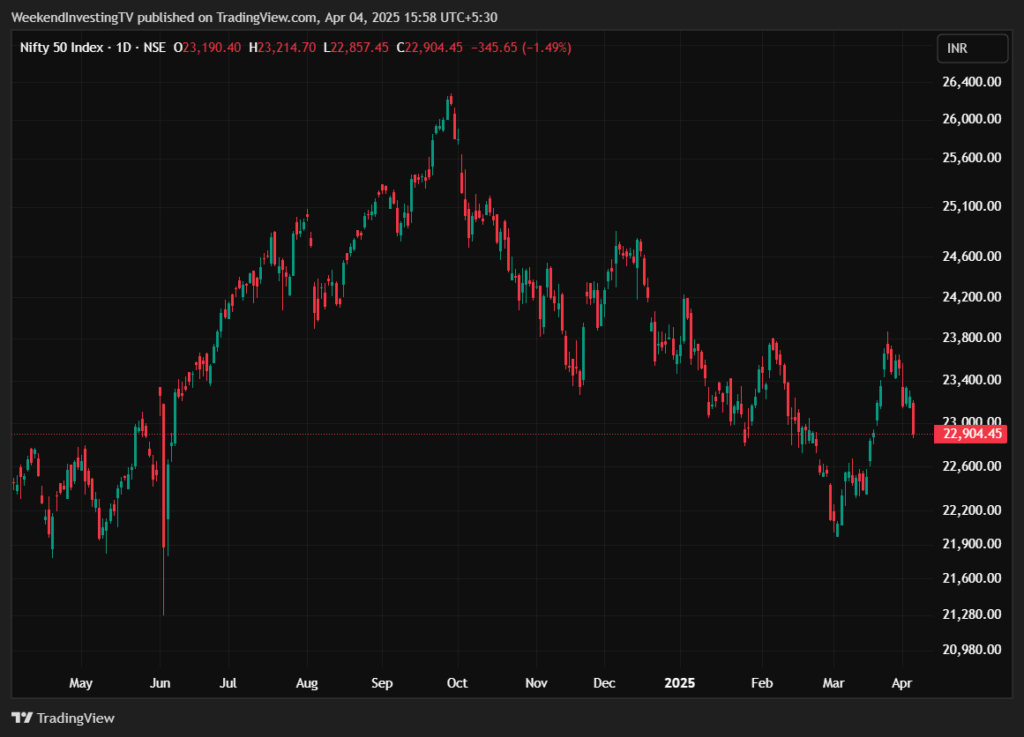
Nifty Next 50
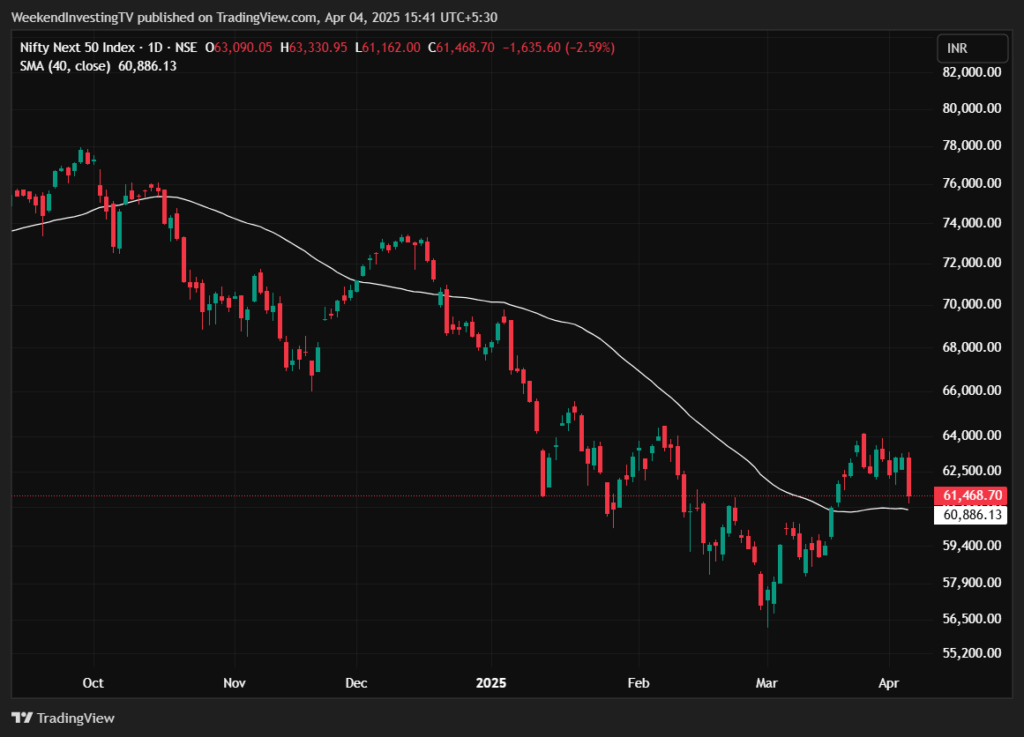
Nifty Mid and Small Cap
Looking across different segments of the market, things are looking bleak. Mid-caps and small caps took the hardest hits today, with losses nearing 3% and 3.3%, respectively. The honeymoon period of the last four weeks appears to be over, unless, of course, there’s a sudden reversal in the tariff war, which doesn’t seem likely at this point. China’s retaliation is not limited to today; further news of tariffs—like on pharma—are expected on April 9th. So, this mess is likely to drag on for the foreseeable future.

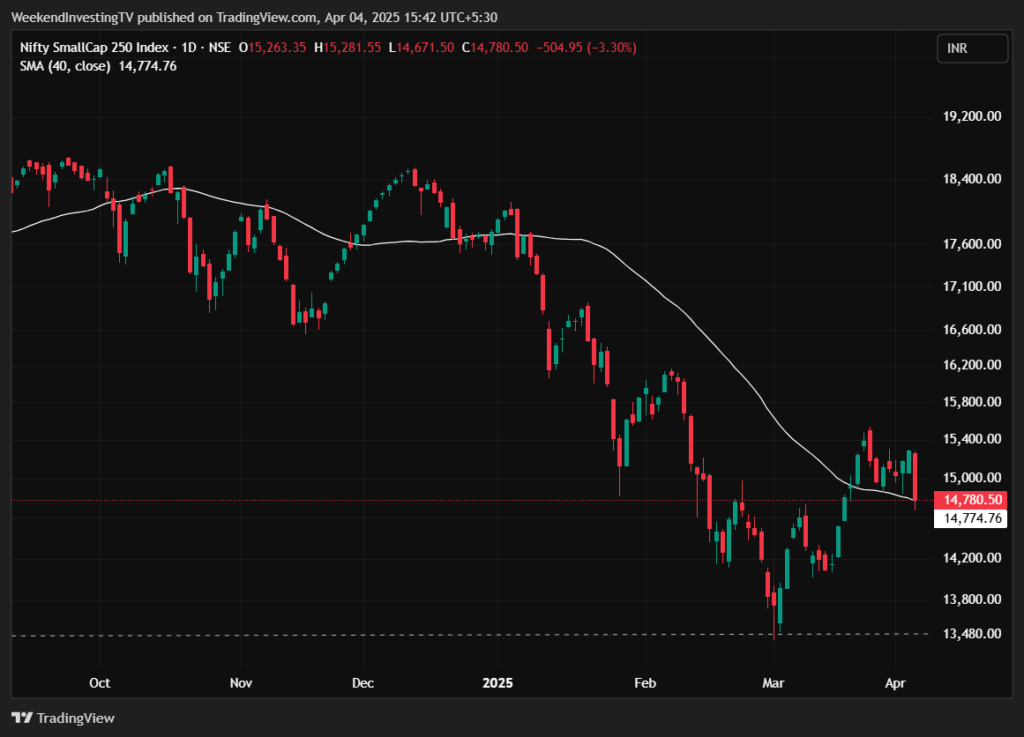
Nifty Bank Overview
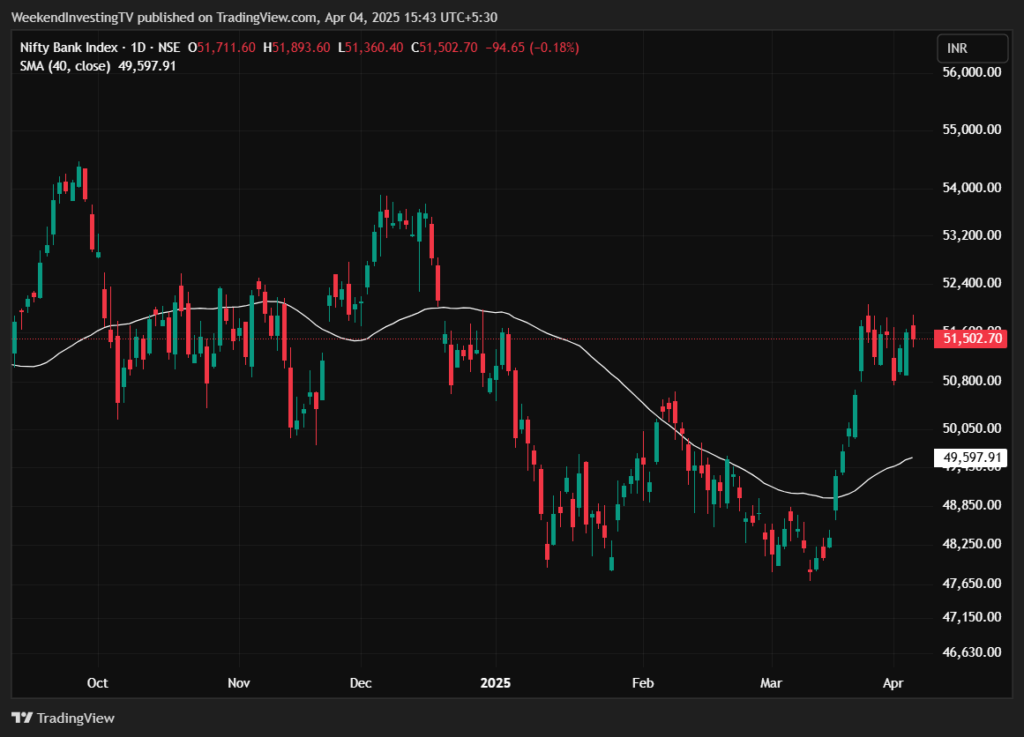
GOLD
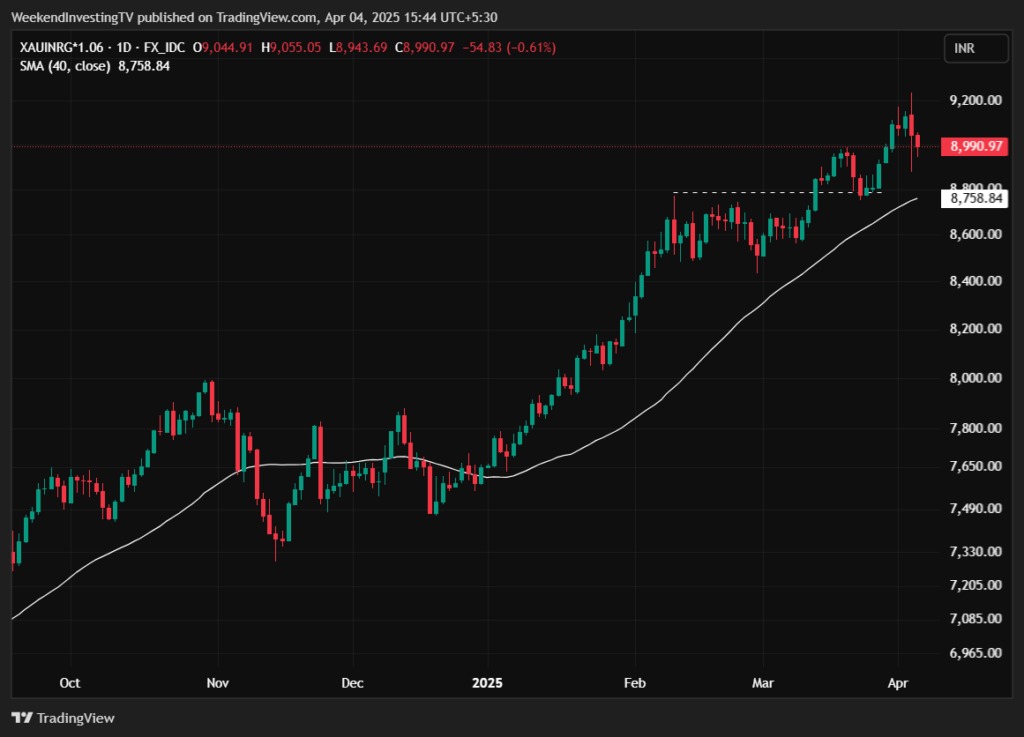
Advance Decline Ratio
The market breadth today is extremely poor—42 stocks in the green versus 458 in the red, marking one of the worst days we’ve seen in a while. The market’s heatmap is entirely red, reflecting the widespread damage across virtually all sectors.
The pain in the broader market is clear.

Heat Maps
This isn’t just a local issue; it’s a global one. Oil prices are down 8% due to the rising fears of a recession, and as a result, energy stocks took a hit, including ONGC, Reliance, and Coal India. Metals were also hammered, with stocks like Tata Steel, Hindalco, and others seeing severe losses. The global supply chains, especially those relying on cheap labor in countries like China and Vietnam, are under immense pressure.
In addition to oil and metals, pharma stocks have also seen major declines, including heavyweights like Sun Pharma, Cipla, and Dr. Reddy.
If you’re looking for places to hide, a few sectors like FMCG and banking are showing relative strength. While there’s still some green in these areas, even banking stocks like State Bank of India (SBI) couldn’t hold on to their positive momentum and started turning red as the day progressed.
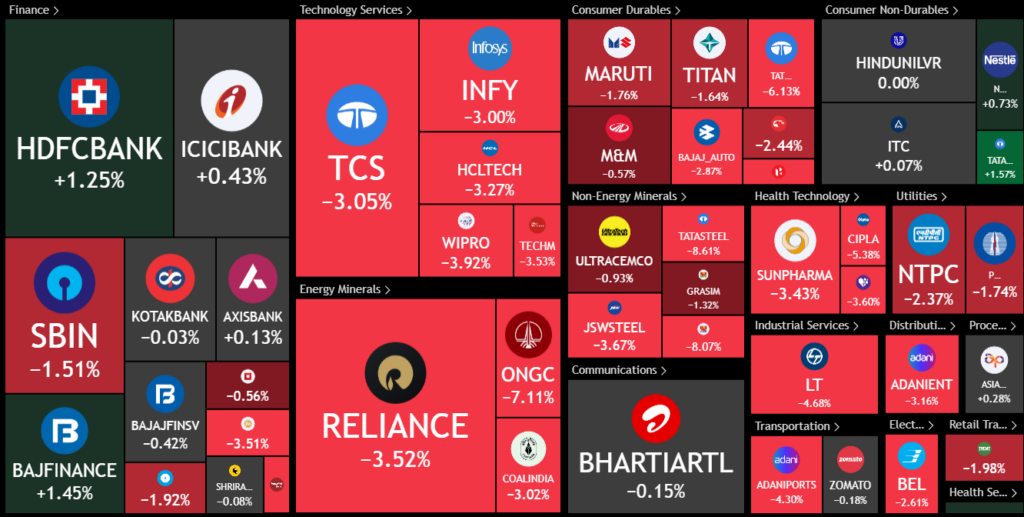
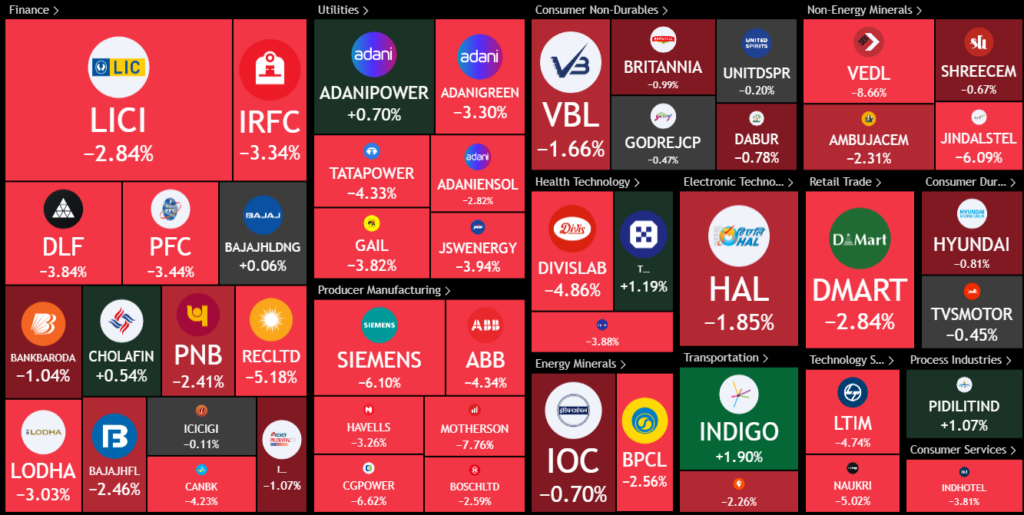
Sectoral Overview
In fact, the broader market, including sectors like real estate, oil and gas, pharma, IT, and energy, all suffered declines ranging from 3.5% to 6.5%. These numbers reflect the widespread nature of the damage in the markets.
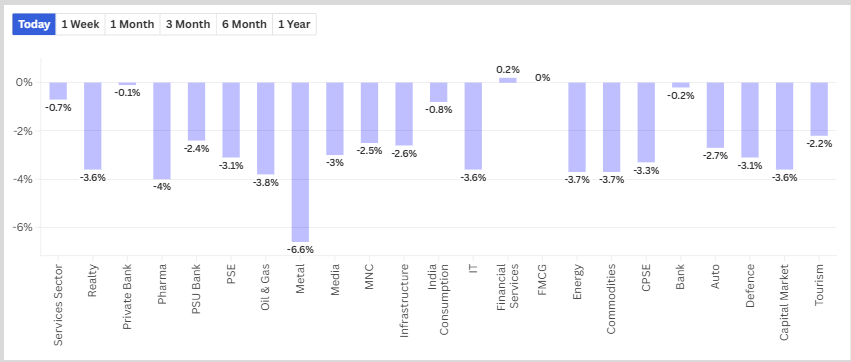
Sectors of the Day
Nifty IT Index
The metals sector, in particular, suffered massive losses—Hindustan Copper was down 9%, Vedanta lost 8.5%, and Tata Steel fell 8.6%

Story of the Day : Trump’s Tariff War: A Big Self-Goal for America?
Now, let’s address the elephant in the room: Is this tariff war President Trump’s biggest self-goal? From his perspective, the idea behind these tariffs is to protect American industries, bring manufacturing back to the U.S., and reduce the country’s reliance on foreign imports. His “Make America Great Again” (MAGA) campaign focused on reviving American manufacturing and creating jobs, and tariffs seemed like a good way to achieve that.
However, there’s a problem: while the intention may be noble, the execution is severely flawed, and it’s likely to backfire in the long run. The biggest issue lies in the economics of it all. Let’s take the example of a product that costs $100 in the U.S., but is made in a country like Vietnam or China. If you slap a 50% tariff on it, the price goes up to $150. Even if that product is manufactured domestically in the U.S., the cost could rise to $200 due to the higher labor costs and less efficient manufacturing processes in the U.S.
The Economic Fallout: A Lose-Lose Situation for Corporations and Consumers
For U.S. corporations, the situation is equally grim. Companies like Nike, which rely on cheap labor in countries like Vietnam and China, are going to see their costs skyrocket. Nike sources 50% of its production from Vietnam, 27% from Indonesia, and 18% from China. With tariffs in place, the cost of goods will rise, leading to higher retail prices for consumers in the U.S. and margin compression for the company.
And it’s not just Nike that’s going to feel the pain. The entire consumer base in the U.S. is likely to suffer from rising prices. While President Trump argues that his tax cuts will offset these higher costs, the reality is that those tax benefits won’t reach the lowest income groups—the very people who will be hit hardest by the higher prices.
Is Trump Engineering a Recession?
There’s also a growing conspiracy theory suggesting that President Trump might be intentionally engineering this market crash. Some believe that the goal is to create enough economic turmoil to push the Federal Reserve into lowering interest rates. Lower rates could help stimulate the economy, but it could also lead to further instability and an eventual recession.
Case Study: Nike and the Tariff Impact
To understand how this tariff war is playing out for American companies, let’s examine Nike. Nike is a $50 billion revenue company, with 50% of its production coming from Vietnam. The new tariffs on Vietnam (46%) will push up production costs, and Nike will have no choice but to pass these costs on to consumers. As a result, prices will rise, sales will likely drop, and profit margins will be squeezed. In the long run, this could lead to significant layoffs, reduced consumer demand, and operational challenges.
Nike has no choice but to rethink its supply chain strategy. While relocating manufacturing to the U.S. is an option, it’s not a short-term fix. The costs of U.S. labor and the lack of specialized infrastructure would make this transition extremely expensive and time-consuming.
Could India Benefit from This Trade War?
There is, however, a potential opportunity for India. As American companies look to reduce their reliance on China and Vietnam, India could step in as a new manufacturing hub. India has the labor and infrastructure to handle some of this demand, but bureaucratic red tape and slow-moving reforms could hinder its ability to capitalize on this opportunity. Nevertheless, if India can overcome these challenges, it could emerge as a key player in the reshaping of global supply chains.
Conclusion: The U.S. Faces a Long Road Ahead
The tariff war between the U.S. and China is proving to be a massive self-inflicted wound. While President Trump’s intentions may have been to revive American manufacturing, the economic consequences of his tariffs are far-reaching. U.S. companies, consumers, and investors are likely to face significant pain in the months to come.
For now, it’s a waiting game to see how the situation develops. Markets are in turmoil, and a global recession could be on the horizon. Whether Trump’s strategy will pay off in the long run remains to be seen, but one thing is clear: The consequences of this tariff war are being felt by everyone.
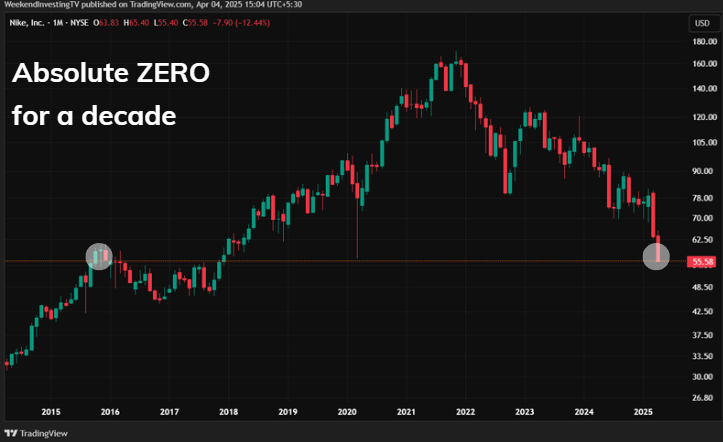
WeekendInvesting launches – The Momentum Podcast
Get ready to dive into an inspiring investing tale!
Join us on WeekendInvesting’s The Momentum Podcast Epsiode 1 as Mr. Yassar, a Dubai-based engineer-turned-investor, reveals his 15-year journey—from Wall Street fascination to mastering systematic trading.
Hear Alok and Yassar talk about Real estate, Gold, Crypto and many hard-earned lessons, and practical tips for navigating markets.
Disclaimers and disclosures : https://tinyurl.com/2763eyaz

